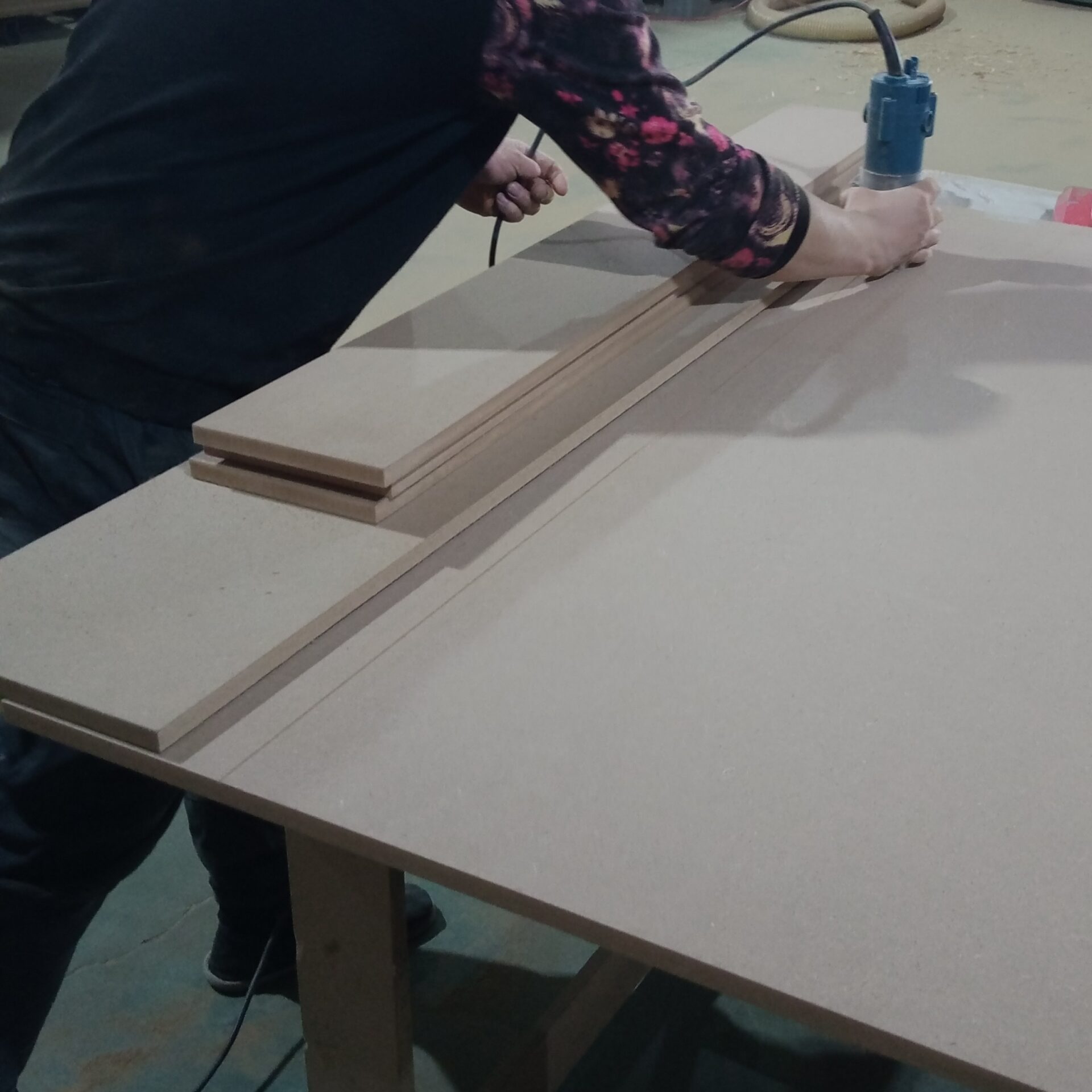Indoor furniture manufacturing has witnessed a significant transformation in recent years, thanks to the advent of innovative materials. These revolutionary materials have revolutionized the industry, offering enhanced durability, aesthetics, and sustainability.
In this post, we delve into the world of innovative materials and their profound impact on the manufacturing processes of indoor furniture. Join us as we explore the exciting possibilities these materials bring to the table, reshaping how we design, create, and experience furniture in our modern homes.
Traditional Materials in Indoor Furniture Manufacturing
Wood: Timeless Beauty and Durability
Wood has been a cornerstone material in indoor furniture manufacturing for centuries. Renowned for its natural beauty and durability, wood offers a timeless appeal that can complement any interior style. Different wood species bring unique characteristics to furniture pieces, from mahogany’s rich warmth to oak’s rustic charm. The craftsmanship involved in working with wood allows for intricate detailing and exquisite joinery, resulting in furniture that stands the test of time.
Upholstery: Comfort and Versatility
Upholstery is vital in indoor furniture, providing both comfort and versatility. Fabrics, leathers, and other upholstery materials offer a wide range of colors, textures, and patterns, allowing furniture designers to create pieces that suit various design aesthetics. From plush sofas to cozy armchairs, the upholstery adds a layer of softness and comfort, enhancing the overall appeal and usability of the furniture.
Metal: Strength and Modern Appeal
Metal has become increasingly popular in indoor furniture manufacturing, especially in modern and contemporary designs. Metal frames, legs, and accents bring furniture pieces a sleek and minimalist aesthetic. Materials such as stainless steel, brass, and aluminum offer durability and strength while allowing for innovative and intricate designs. Combining metal and other materials like wood or glass creates visually striking and stylish furniture that embodies a modern appeal.
As indoor furniture manufacturing continues to evolve, traditional materials like wood, upholstery, and metal remain essential elements that provide a solid foundation for creating functional and aesthetically pleasing pieces. However, innovative alternatives have emerged alongside these traditional materials, introducing exciting possibilities in furniture design and manufacturing. Let’s explore these innovative materials in the next section.
The Rise of Innovative Materials
Engineered Wood Products: Enhanced Stability and Sustainability
Engineered wood products have gained popularity in indoor furniture manufacturing due to their enhanced stability and sustainability. These materials, such as plywood and medium-density fiberboard (MDF), are created by combining wood fibers or veneers with adhesives and other additives. Engineered wood offers improved dimensional stability, reducing the risk of warping or cracking compared to solid wood. Moreover, by utilizing wood fibers efficiently, these products contribute to sustainable forestry practices and reduce waste.
Composite Materials: Durability and Design Flexibility
Composite materials have revolutionized furniture manufacturing with their exceptional durability and design flexibility. These materials, such as fiberglass and carbon fiber, combine different components, including resins, fibers, and additives. Composite materials offer high strength-to-weight ratios, making them ideal for creating lightweight yet sturdy furniture. Additionally, their versatility allows for innovative shapes and designs that push the boundaries of traditional furniture aesthetics.
Sustainable Materials: Eco-Friendly Alternatives for Conscious Manufacturing
With the growing importance of sustainability, furniture manufacturers are increasingly turning to eco-friendly materials. Sustainable materials include bamboo, reclaimed wood, recycled plastic, and natural fibers. These materials offer renewable and low-impact alternatives to traditional resources. By incorporating sustainable materials into furniture production, manufacturers contribute to reducing environmental impact while meeting the demand for environmentally conscious products.
The rise of innovative materials in indoor furniture manufacturing has expanded the possibilities for designers and consumers alike. Engineered wood products provide stability and sustainability, composite materials offer durability and design flexibility, and sustainable materials allow for eco-friendly manufacturing practices. These materials not only enhance the functionality and aesthetics of furniture but also align with the values of conscious consumers. Advantages of Using Innovative Materials
Advantages of Using Innovative Materials
Increased Design Possibilities
One of the key advantages of using innovative materials in indoor furniture manufacturing is the expanded design possibilities they offer. Traditional materials often have limitations in shape, form, and texture. However, innovative materials such as engineered wood, composites, and sustainable alternatives allow designers to explore unique shapes, intricate detailing, and creative combinations. These materials qualify for creating furniture that breaks conventional styles and caters to diverse design preferences.
Enhanced Durability and Longevity
Innovative materials are known for their enhanced durability and longevity compared to traditional materials. Engineered wood products, for instance, are designed to resist warping, shrinking, and swelling, ensuring long-lasting performance. Composite materials offer exceptional strength and resistance to impact, making furniture more resilient to daily wear and tear. By incorporating these materials, manufacturers can produce furniture that withstands the test of time, providing consumers with pieces that retain their beauty and functionality for years to come.
Improved Sustainability and Environmental Impact
Another significant advantage of using innovative materials is their improved sustainability and reduced environmental impact. Engineered wood products utilize wood fibers efficiently, reducing the demand for solid wood and promoting responsible forestry practices. Composite materials often incorporate recycled or reclaimed components, diverting waste from landfills and minimizing resource consumption. Sustainable materials, such as bamboo and natural fibers, offer renewable alternatives to conventional resources. By prioritizing these materials, indoor furniture manufacturers contribute to a more sustainable industry and address the growing demand for eco-friendly products.
The advantages of using innovative materials in indoor furniture manufacturing are manifold. These materials open up new avenues for design, offering increased possibilities for creating unique and visually appealing furniture pieces.
Moreover, they enhance durability, ensuring furniture withstands daily use and maintains its quality over time.
Additionally, using innovative materials promotes sustainability and reduces environmental impact, aligning with the values of eco-conscious consumers.
Challenges and Considerations
Cost and Affordability
One of the primary challenges associated with using innovative materials in indoor furniture manufacturing is the cost. Compared to traditional materials, innovative materials may involve higher production costs due to research and development, specialized manufacturing processes, and sourcing considerations. As a result, the retail price of furniture made with these materials can be higher, making it less accessible for some consumers. Indoor furniture manufacturers must balance incorporating innovative materials and ensuring affordability without compromising quality.
Performance and Quality
Another consideration when using innovative materials is ensuring their performance and quality meet consumers’ expectations. Furniture made with traditional materials often has a long-standing reputation for durability and craftsmanship. Therefore, it is essential for manufacturers to thoroughly test and assess the performance characteristics of innovative materials, ensuring they can withstand regular use and maintain their quality over time. This involves rigorous quality control measures, extensive research, and continuous improvement to meet or exceed the standards set by traditional materials.
Consumer Perception and Acceptance
Introducing innovative materials into the market may face consumer perception and acceptance challenges. Some consumers may be accustomed to traditional materials and have reservations about the reliability, authenticity, and aesthetic appeal of furniture made with innovative materials. Manufacturers need to educate and inform consumers about the benefits and advantages of these materials, emphasizing their durability, sustainability, and design possibilities. Building trust and credibility through transparent communication can help overcome initial resistance and encourage wider acceptance of furniture incorporating innovative materials.
While there are numerous benefits to embracing innovative materials in indoor furniture manufacturing, it is important to address the challenges and considerations associated with their use.
Furniture manufacturers must carefully assess the cost implications and find ways to make furniture with innovative materials more accessible to a wider range of consumers.
Additionally, ensuring the performance and quality of these materials is crucial to maintain customer satisfaction and confidence in their durability.
Finally, actively promoting and educating consumers about the benefits and features of furniture made with innovative materials can help overcome initial skepticism and encourage wider acceptance in the market.
Future Trends in Indoor Furniture Manufacturing
Integration of Smart Technologies
The future of indoor furniture manufacturing is set to embrace the integration of intelligent technologies. With the rise of the Internet of Things (IoT), furniture is becoming more intelligent and connected. This includes embedded sensors, wireless charging capabilities, and integrated smart controls for lighting, temperature, and multimedia devices. Innovative furniture enhances convenience and functionality and opens up opportunities for customization and personalized experiences within the modern home.
Exploration of Bio-Based Materials
Sustainable and eco-friendly practices continue to shape the future of furniture manufacturing. As the industry seeks alternatives to conventional materials, bio-based materials are increasingly explored. These materials, derived from renewable sources such as bamboo, cork, and recycled plastics, offer a more environmentally friendly option for furniture production. Bio-based materials reduce reliance on traditional resources and contribute to lower carbon emissions and a healthier indoor environment.
Customization and Personalization
In the future, customization and personalization will play a significant role in indoor furniture manufacturing. Consumers seek unique and tailored pieces that reflect their style and preferences. Manufacturers respond to this demand by offering customization options such as fabric choices, finishes, and modular configurations. Advancements in technology, such as 3D printing and digital design tools, enable more detailed customization, allowing customers to have furniture that truly suits their specific needs and tastes.
Integrating intelligent technologies, exploring bio-based materials, and focusing on customization and personalization characterize the future of indoor furniture manufacturing. These trends not only enhance the functionality and sustainability of furniture but also offer consumers greater flexibility and control over their living spaces. As technology continues to evolve and sustainable practices gain prominence, the furniture industry is poised for innovative advancements that will shape how we furnish our modern homes.
Conclusion
As indoor furniture manufacturing continues to evolve, embracing both tradition and innovation, we witness the emergence of innovative materials that revolutionize the industry.
Integrating engineered wood products, composite materials, and sustainable alternatives opens new possibilities for design, durability, and environmental consciousness. While these materials bring advantages such as increased design possibilities, enhanced durability, and improved sustainability, there are also challenges to consider, including cost, performance, and consumer perception.
Looking ahead, integrating intelligent technologies will shape the future of indoor furniture manufacturing, the exploration of bio-based materials, and a focus on customization and personalization. With these trends, manufacturers and consumers alike can look forward to furniture that combines functionality, sustainability, and individuality, bringing a new level of sophistication and comfort to the modern home.





